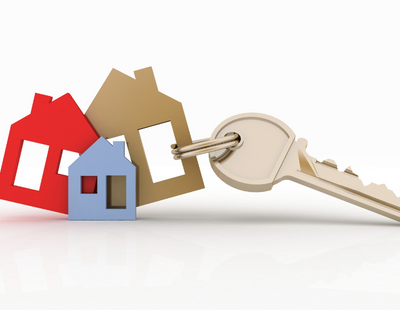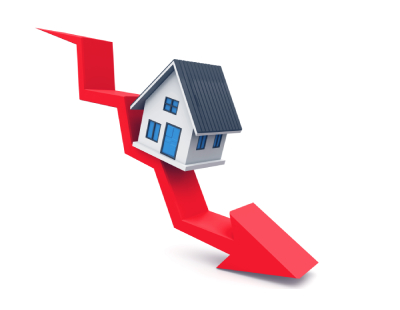Higher mortgage rates have meant that new buy-to-let purchases are increasingly being funded by cash rather than a mortgage, new research suggests.
Analysis by Hamptons has found that so far this year, 59% of buy-to-let purchases in Great Britain were mortgage free, the highest share in six years and up from 53% in 2022.
The biggest shift has come in southern areas of the country, where yields tend to be lower, the agent said.
So far this year a record 61% of investor purchases in the four southern region -London, South East, South West and East of England - were made in cash, up from a low of 47% in 2022.
In contrast in North England, cash purchases have fallen year-on-year from 62% in 2022 to 60% in 2023.
This means that for the first time since Hamptons’ records began, a landlord buying in the South of England is more likely to be a cash buyer than an investor buying in the North where prices are lower.
The agent said this shift is being driven by today’s higher interest rate environment.
It said: “Higher interest rates make it harder for the buy-to-let sums to stack up, particularly in low-yielding areas of the country that generate smaller rental returns.
“Furthermore, it’s these low yielding areas, particularly in the South, where investors may find it difficult to pass a lenders’ stress test and explains why more are turning to cash.”
The average landlord who bought a buy-to-let in the South of England during the last 12 months achieved a 5.4% gross yield, lower than some mortgage rates, compared to 7.5% for those who bought in the North, according to the research.
To avoid failing lender’s stress tests and to maintain landlord’s margins, cash has become more popular in the lowest-yielding areas of the country. A record 71% of buy-to-let purchases in areas where the average gross yield is less than 5% were mortgage free so far this year, up from 50% in 2022.
Meanwhile in areas where gross yields exceed 8%, a higher proportion of buy-to-lets are being purchased with a mortgage.
Overall, Hamptons estimates that this shift towards cash ownership will save new landlords across Great Britain around £61.9m in mortgage interest payments this year. This is based on the average mortgaged investor paying £187,110 for their buy-to-let and putting down a 25% deposit.
On the flip side, it’s likely that new investors using a mortgage will pay around £405m in mortgage interest payments in 2023 if they were to buy using a 75% loan-to-value mortgage at an average rate of 5.27%. This is up from £347m in 2022 when mortgage rates were lower and there were more new buy-to-let purchases.
Aneisha Beveridge, head of research at Hamptons, said: “Against a backdrop of higher mortgage rates, investors are adapting.
“So far this year, 12.1% of homes sold in Great Britain were purchased by a buy-to-let landlord, the same level as in 2022. While existing investors are paying down debt, new investors, particularly those wanting to buy in the lowest yielding parts of the country, are choosing cash to ensure the sums stack up. Overall, this is set to shrink the total mortgage bill for buy-to-let in 2023.
"The recent rise in cash purchases brings a close to landlords’ ability to access competitive mortgage deals.
“Sub 2% mortgage rates – available over the last few years – meant landlords who were able to buy homes outright chose instead to make the most of record low rates. Many investors spread their cash as far as it could go by topping it up with low borrowing costs to maximise their returns. However, today, investors are having to dig deeper into their savings to ensure the sums stack up on any new buy-to-lets.”
|
|
2022
|
2023 YTD
|
YoY
|
|
London
|
43%
|
67%
|
23%
|
|
South East
|
47%
|
65%
|
18%
|
|
South West
|
52%
|
63%
|
11%
|
|
Wales
|
63%
|
70%
|
8%
|
|
Scotland
|
62%
|
69%
|
7%
|
|
West Midlands
|
52%
|
57%
|
5%
|
|
East Midlands
|
43%
|
47%
|
4%
|
|
East of England
|
43%
|
44%
|
1%
|
|
Yorks. & The Humber
|
61%
|
62%
|
0%
|
|
North West
|
63%
|
61%
|
-2%
|
|
North East
|
56%
|
52%
|
-3%
|
|
Great Britain
|
53%
|
59%
|
6%
|
















.png)


.png)




Join the conversation
Be the first to comment (please use the comment box below)
Please login to comment